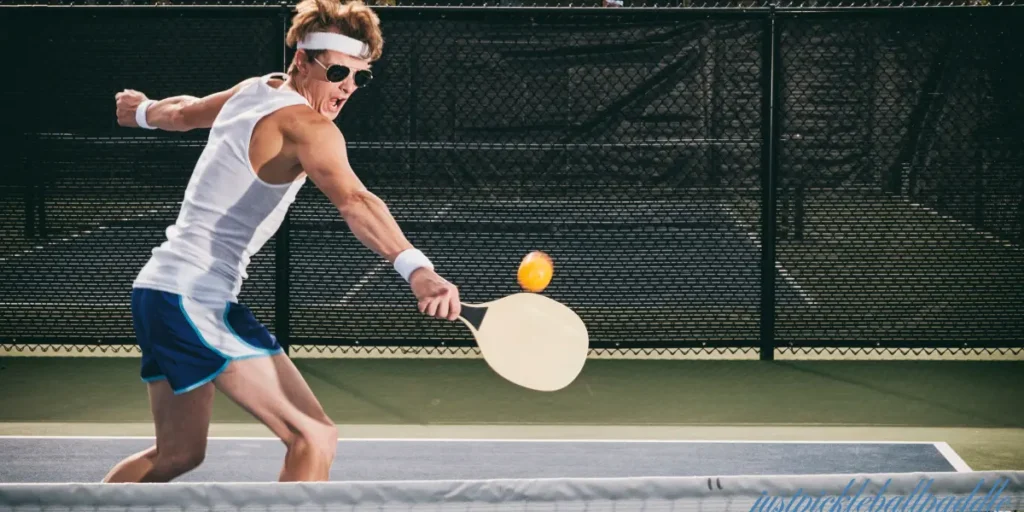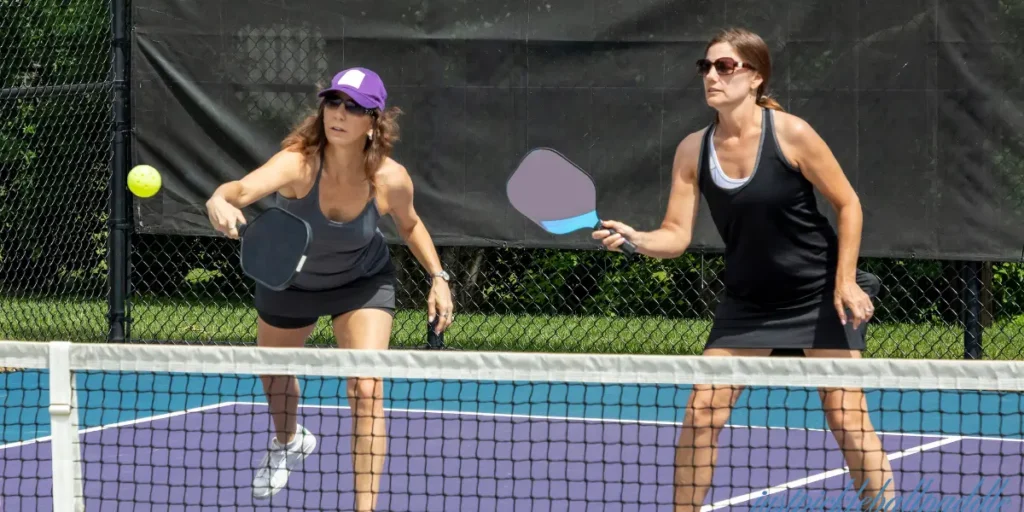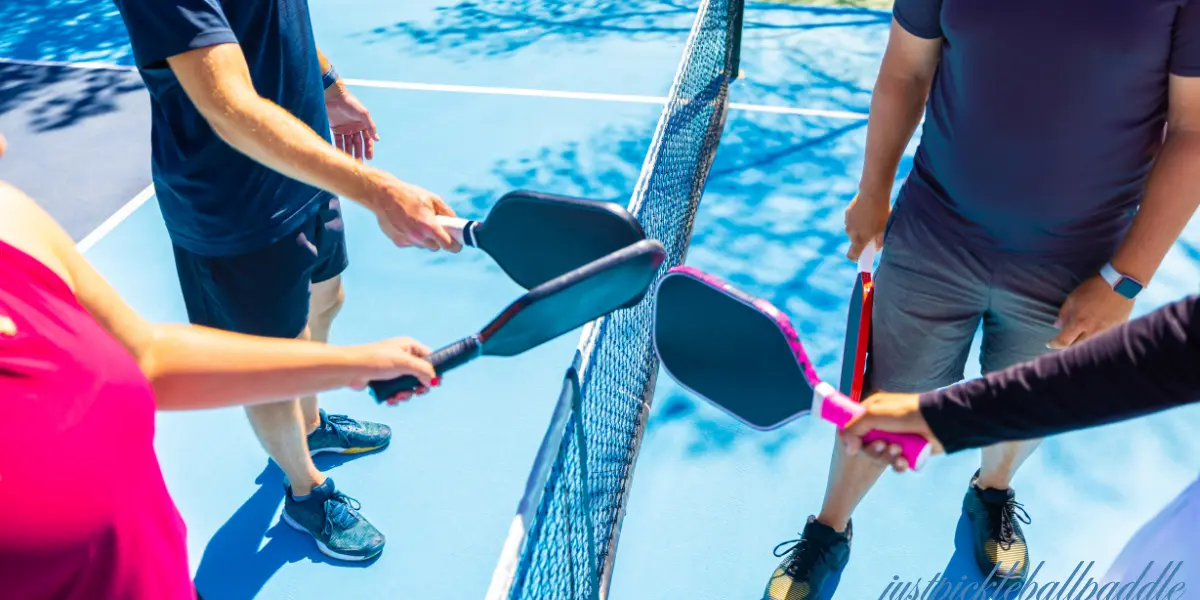Can you hit the net on a serve in pickleball? No, according to the official rules, if the ball hits the net on a serve and does not land correctly in the service box, it results in a fault.
Understanding pickleball’s serving rules is essential to prevent faults and ensure a smooth, fair game. Serving is a crucial part of the game, and mastering the legal techniques can give players a competitive edge.
What Happens If the Ball Hits the Net on a Serve in Pickleball?
Official Pickleball Serving Rules (USA Pickleball & IPTPA Guidelines)
Pickleball has strict serving rules, and hitting the net on a serve comes with specific consequences:
- If the serve hits the net and lands outside the service box, it is a fault.
- If the serve hits the net and lands inside the correct service box, it is still a fault (since the “let serve” rule was removed).
- A fault results in a loss of serve in singles or a change to the next server in doubles.
Net Serve Rule: Let Serves Are No Longer Allowed
Previously, pickleball allowed “Let serve in pickleball,” meaning if the ball hit the net but landed in the correct service box, the serve was replayed. However, in 2021, the rule was changed, eliminating the let serve. The reason for this update was to remove disputes and ensure faster gameplay.

Why Change this Rule
With this rule change, players must now ensure their serves fully clear the net, as any contact with the net results in a fault. This adjustment has led to a more skill-based game, requiring greater accuracy and control in serves.
Additionally, it has encouraged players to develop a more consistent and refined serving technique to minimize errors.
What Are the Different Types of Pickleball Serves?
Serving is a fundamental aspect of pickleball, and choosing the right serve can improve accuracy and consistency.
Drop Serve vs Traditional Serve
There are two primary serving techniques in pickleball:
| Serve Type | Ball Can Hit Net? | Rules | Best For |
|---|---|---|---|
| Traditional Serve | No (fault if net is hit) | Must clear net & land in service box | Advanced players |
| Drop Serve | No (same rule applies) | Can bounce once before hitting | Beginners & injury recovery |
The traditional serve requires the ball to be hit underhand before it touches the ground, while the drop serve allows the ball to bounce once before being struck. Regardless of the serve type, both must clear the net and land in the correct service area to be legal.
Common Pickleball Serving Faults
One of the most common faults is hitting the net on a serve, which results in an immediate fault and loss of serve. Foot faults are another frequent mistake, occurring when a player steps on or over the baseline before making contact with the ball.
Additionally, an illegal serving motion, such as hitting the ball above the waist or using an overhand hit in pickleball, can also lead to faults. Similarly, players should also be aware of whether a double hit in pickleball is allowed, as improper paddle contact can also result in faults during rallies.
Related Post: Can You Touch the Net in Pickleball
How to Avoid Net Faults on a Serve in Pickleball?
Avoiding net faults requires proper technique, grip, and positioning. Players should stand behind the baseline with a balanced footing, ensuring a stable posture. Using a continental grip helps maintain better control over the paddle angle while keeping the wrist relaxed ensures a smooth and consistent serving motion.

One effective way to clear the net is by maintaining a proper toss height. Keeping the toss low enhances control, reducing the chances of hitting the net. Adjusting the paddle angle slightly upward also helps to ensure the ball clears the net.
Following through on the swing is another crucial aspect, as it generates consistent power and accuracy in the serve.
Practicing specific drills can significantly improve serve accuracy. Wall drills involve serving towards a marked spot on a wall to enhance consistency.
Target serving practice, where cones are placed in the service box, helps players improve their precision. Net clearance drills focus on serving just above the net to refine control and ensure legal serves.
By incorporating these techniques and drills, players can develop a more accurate and reliable serve.
FAQs
No. Unlike tennis, pickleball does not allow second serves; a fault results in a loss of serve. Players must be mindful when serving to ensure accuracy on their first attempt, as there are no extra opportunities to redo a faulty serve.
No. The net serve rule applies to both formats. Regardless of the format, consistency and control in serving are essential to maintaining an effective game strategy.
It is still a fault, as let serves are no longer allowed. Players should practice controlled serves with proper net clearance to prevent unnecessary faults and maintain the flow of the game.
No, all official USA Pickleball-sanctioned tournaments follow the same rule set. Whether playing casually or in a high-stakes competition, adhering to these standardized rules ensures fair play and uniformity across all levels of pickleball.
Conclusion
If your serve hits the net, it is considered a fault, even if it lands in the correct service box. The removal of let serves has emphasized the importance of precision and skill in serving. Players must focus on refining their technique to avoid faults and enhance their gameplay.
Practicing proper serving mechanics and drills can help players become more consistent and effective servers.
Developing a smooth, repeatable motion can make serving more reliable while staying relaxed under pressure can prevent unnecessary errors.

